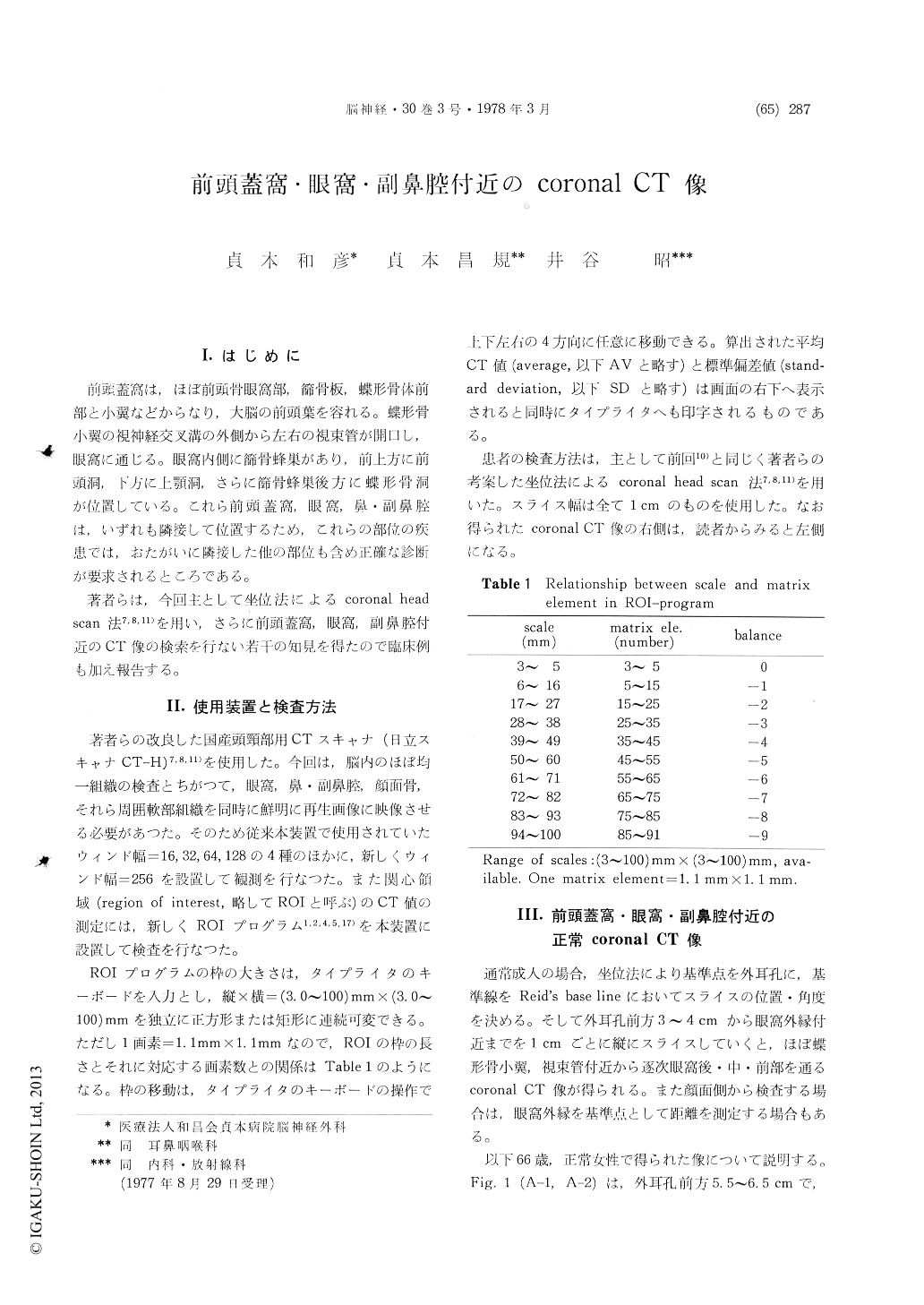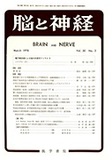Japanese
English
- 有料閲覧
- Abstract 文献概要
- 1ページ目 Look Inside
I.はじめに
前頭蓋窩は,ほぼ前頭骨眼窩部,篩骨板,蝶形骨体前部と小翼などからなり,大脳の前頭葉を容れる。蝶形骨小翼の視神経交叉溝の外側から左右の視束管が開口し,眼窩に通じる。眼窩内側に鯖骨蜂巣があり,前上方に前頭洞,下方に上顎洞,さらに篩骨蜂巣後方に蝶形骨洞が位置している。これら前頭蓋窩,眼窩,鼻・副鼻腔は,いずれも隣接して位置するため,これらの部位の疾患では,おたがいに隣接した他の部位も含め正確な診断が要求されるところである。
著者らは,今回主として坐位法によるcoronal headscan法7,8,11)を用い,さらに前頭蓋窩,眼窩,副鼻腔付近のCT像の検索を行ない若干の知見を得たので臨床例も加え報告する。
Coronal scans of the regions of the anterior cranium, orbits, paranasal sinuses and other facial structures were obtained with the patient in sitting position The HITACHI craniocervical CT scanner was used for this purpose. The scanner takes two simultaneous adjacent slices, O.5 or 1.0 cm thick, in a scanning time of 3 min 40 sec. The image is reconstructed on a 256 X 256 matrix, displayed onblack- and -white and color TV monitors, and the window width 16, 32, 64 and 128 are employed conventionaly. Each matrix element corresponds to an area of 1.1 mm X 1.1 mm. The CT number in each matrix element lies on an arbitrary scale between -500 and +500. The X-ray generator is operated at 120 kV and 30 mA.
In this paper, the newly developed window width 256 and ROI-program were used for the precise observation of CT images. The window width 256 was useful for visualization of the nasal turbinates, paranasal sinuses and other soft tissues in CT images. Color presentations often demon-strated these regions to a better advantage. The ROI-program provided a quick and percise method of determining CT number at any point or area of an image. The ROI-program was valuable in a square or rectangular shape from the size of 9 matrix elements (3 mm X 3 mm) at minimum up to that of 8281 matrix elements (100 mm X 100 mm) at maximum. The ROI position could be moved anywhere on the TV monitors. The read-out ofa size, an average (mean) CT number and its standard deviation within the region of interest demonstrated on the right inferior portion of a CT image.
The anterior fossa, orbits and paranasal sinuses are complicated structures and closely related each other. Examinations of these regions were hard to obtained precisely by conventional axial CT alone. For the visualization of the vertical plane of the lesions extended in these regions, the vertical plane demonstrations by employing coronal CT were useful. Furthermore, for diseases in the orbit, particularly, the vertical plane relationship between the eye ball and the lesion, coronal CT was useful. Therefore, for the examination by using CT scanner for the above regions, coronal CT as well as axial CT (biplane CT) were required. In addition, the biplane CT examinations are useful for the inferior portion of the facial region and for the radiation therapy planning of the head and neck.

Copyright © 1978, Igaku-Shoin Ltd. All rights reserved.


